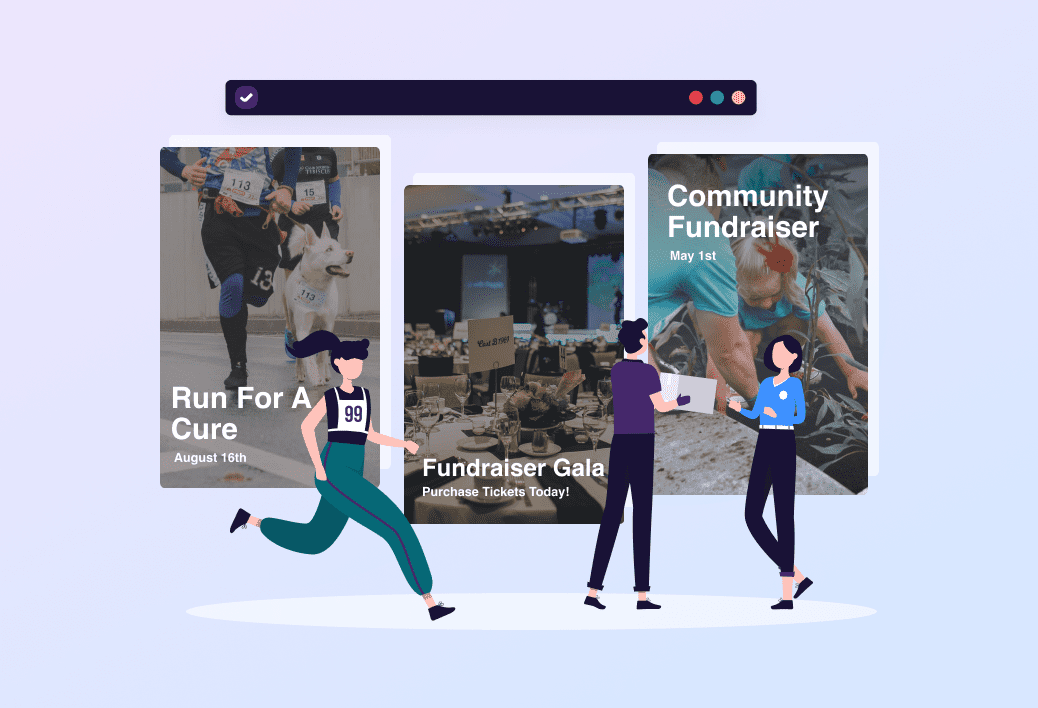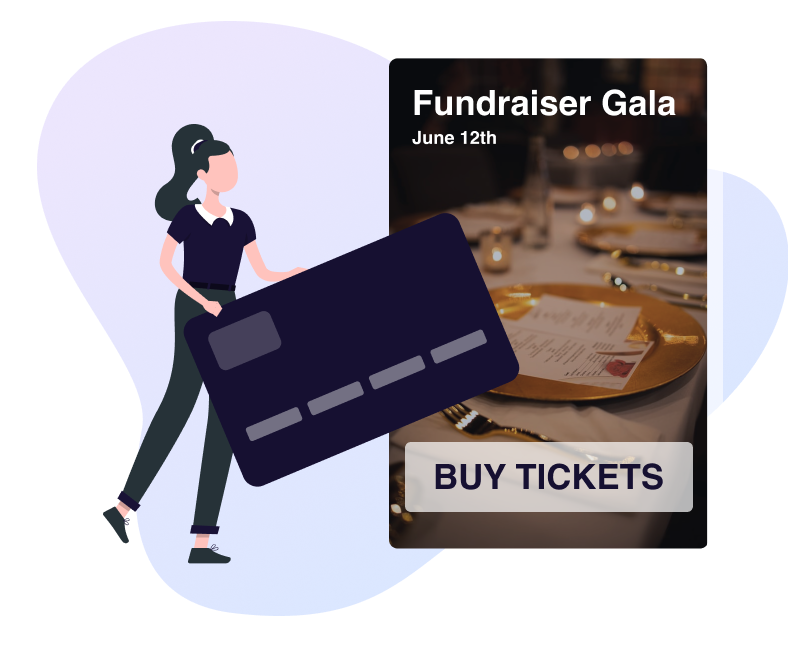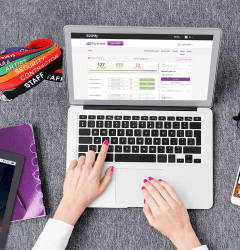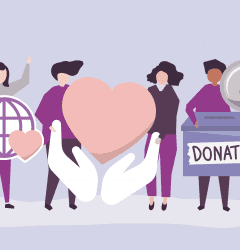28 Jun

How to sell tickets for a charity event
Make non-profit event ticketing lucrative and hassle-free for your organization with these simple steps
Galas, auctions, fundraisers, and ‘thons are the lifeblood behind many successful non-profit and charity organizations. While relying on subscribers and benefactors may be the dream for an NPO, the reality is that fundraising events are the best way to both collect critical funding for an organization and reach potential donor and volunteer pools. Unlike a for-profit business, NPOs and charity event planners need to minimize costs and maximize revenue wherever possible. That’s why knowing how to sell tickets for a charity event effectively is a must.
While in the past, this may have been sending people donation envelopes or mailers or encouraging donations at the event itself, online ticketing platforms have opened up a new avenue for making your next charity event a fiscal success. However, it’s not just about selling tickets online. There are some additional tricks and tips that you can use to offer potential attendees multiple avenues to donate, as well as to minimize your overhead costs. Let’s explore some of the best tricks for handling charity ticket sales online for your next fundraiser.
Step 1: Identify the best NPO online ticketing platform for your needs
You’ll need to start by selecting a ticketing website that offers the best combination of feature set and cost savings to maximize your revenue. When trying to find that perfect balance in an online ticketing vendor, you’ll want to consider:
- Does the ticketing platform offer competitive fee structures? Most ticketing software options will charge a flat per-ticket fee, as well as a percentage of the ticket sale. However, some will waive one or the other, which can direct those dollars to your bottom-line instead.
- Does the online ticket seller offer free event page setup, or is there an additional fee associated?
- Are there additional NPO event management features available, such as custom event websites, online RSVP software, QR code event check-in, and other elements that can assist your overall event planning?
- Does the ticketing website offer single-use subscriptions if you are only looking for a one-time solution (and a single payment), or are you looking for a long-term nonprofit ticketing solution that you can use for recurring events?
Step 2: Consider your fee structure and revenue options
No matter which option you choose to sell tickets online, your attendee and donor population will determine the ceiling of your potential fundraising success. Once you have your vendor but before setting up your online ticket sales, you’ll want to work with your planning team to identify how you want to price different donation or attendance fees to encourage greater participation and incentivize attendees to contribute as much as possible. There are a lot of clever ideas for making fundraisers unique out there, which is a great idea, but there are also some logistical considerations, such as:
- Do you want to offer a flat ticketing fee, with everyone paying the same amount? This might be best for bigger events like a 5K, museum gala, or picnic, for example.
- Or, do you want to offer custom or VIP experiences to incentivize bigger donors who might be wooed by a more exclusive experience? This might involve creating tiers of tickets, with access to secondary events, early entry, additional benefits, exclusive meetings with NPO management, and more.
- Do you want to add a field for additional donations aside from ticket sales? This can allow you to offer the same easy-to-navigate flat ticketing structure, while also incentivizing attendees with deeper pockets to contribute more.
- Do you want to include tax paperwork to allow attendees to more easily receive deductible tax benefits for their donations or purchases, as part of the online invitation or ticketing process?
Some of these considerations may also influence who you choose for a nonprofit ticketing platform, since some platforms offer custom-made templates or features designed specifically for these needs.
Step 3: Choose an appropriate date to begin selling tickets or collecting donations
Another often mishandled element in selling tickets for a charity event or gala is choosing the wrong date to notify attendees about ticket sales, as well as the deadline for closing ticketing. If you don’t give attendees enough time to consider your event, your overall participation and resulting revenue will suffer. However, on the opposite side, giving too much leeway may cause attendees to forget about your event and lead to wasteful spending on a venue that’s too large, vendor purchases, and more.
While there isn’t necessarily a perfect time to begin ticket sales for your charity event, a good starting point is 2 months ahead of the event, with a deadline for online ticket selling of about 2 weeks in advance of the big day. This gives potential attendees ample warning to clear their calendar, buy tickets, and share the news with others, while also ensuring that you will have concrete estimated attendance figures in time for final coordination with the venue and relevant vendors. While it is tempting to collect ticket sales up to the moment the event starts (and for some events, may be more doable and less of a logistical headache), remember that you’ll also want your event to be an enjoyable and memorable experience for your attendees to encourage organization buy-in and future contributions. Leaving yourself a little window to adjust your planning and ensure everything is all set can pay serious dividends for any NPO in the long run.
Step 4: Reflect and adjust before your next NPO event
While NPOs and charities always have something next on their planning menu, the final step is often the most overlooked. You should carve out some time to sit down with your planning or management team to evaluate ticket sale data (which the best ticketing platforms can easily provide for you as part of your account) and consider areas of opportunity and success. Did attendees complain about too little advance notice, or limited options for contributions? Were there costs that could be trimmed to maximize your fundraising intake at a future, similar event? Is this type of event a good draw and fit for your organization’s values and missions, or could a different type of fundraiser accomplish similar revenue goals while making a better impression on potential sponsors and contributors? Take time to do a deep dive into your ticketing data, and let the data inform your event planning in a reliable and measurable way for next time.
Interested in how RSVPify can help with your nonprofit event planning?
Now that we covered how to sell tickets to your charity event, do you have additional nonprofit event management questions you’d like answered?
Learn more about RSVPify’s industry-leading nonprofit event management suite of features here, to see what else RSVPify can make easier for you.
Want to see what a demo nonprofit event looks like in action? Try one out!
Looking for tips specifically for hosting a gala event? We have that covered.
Adam Hausman co-founded RSVPify in 2013 and has been passionate about event tech and ticketing software ever since. Also founder of Greenlight Growth Marketing, he holds degrees from Indiana University (BA English/Psychology 2008) and the University of Illinois-Chicago (M.Ed. Secondary Education 2012). He lives in Maine with his wife, 2 kids, and 2 annoying cats.











Adam Hausman